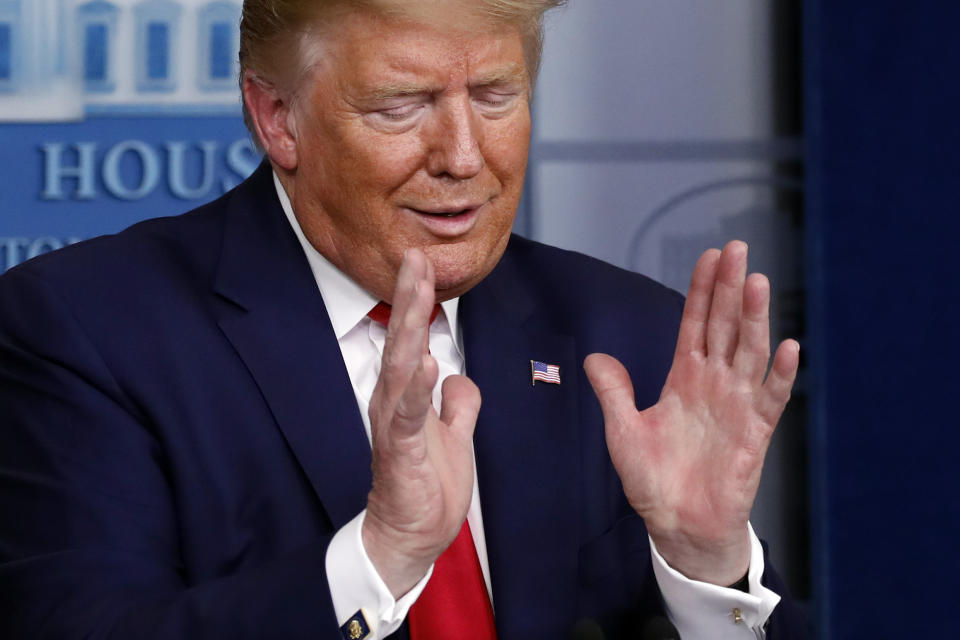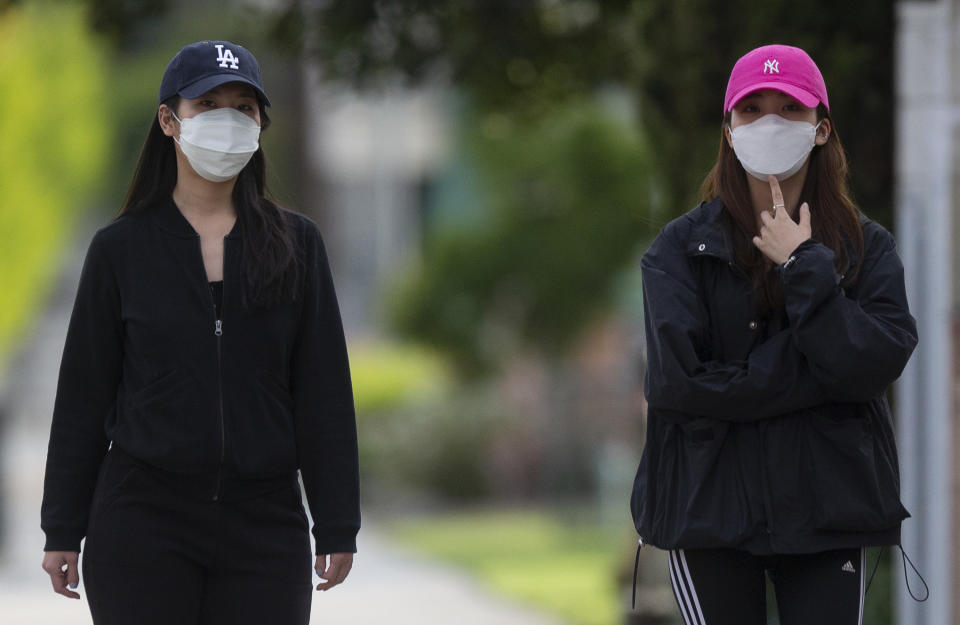CDC gives 'voluntary' guidance on wearing coronavirus masks. Trump isn't volunteering.
Ending a week of speculation, the Centers for Disease Control Friday evening issued voluntary guidance for Americans to cover their mouth and nose when going outside.
President Trump said he didn’t plan to follow the recommendation. “I don’t think that I’m going to be doing it,” he said at a White House briefing by the coronavirus task force.
The new guidance came in response to accumulating evidence that people can spread the coronavirus without showing symptoms of COVID-19. Surgeon General Jerome Adams emphasized that the measure was intended to prevent possibly infected individuals from spreading the virus rather than to protect the wearer.
Medical-grade N95 respirators, which do function as protection, remain in short supply in many hospitals and are being conserved for health care professionals.
“The CDC is advising the use of nonmedical cloth face covering as an additional voluntary public health measure,” Trump said. “So it’s voluntary, you don’t have to do it. And they suggest it for a period of time, but this is voluntary. I don’t think that I’m gong to be doing it,” Trump said.

With face masks in short supply in the nation’s hospitals, Trump invoked the Defense Production Act on Thursday to compel 3M to ramp up their production. At the same time, debate has raged inside the federal government over whether to recommend that ordinary citizens use face masks whenever they leave home.
“The CDC is recommending that Americans wear a basic cloth or fabric mask that can be either purchased online or simply made at home with probably material that you’ve made at home,” Trump said. “These face coverings can easily washed at home or reused. But we want to emphasize that the CDC is not recommending the use of medical grade or surgical grade masks and we want that to be used for our great medical people that are working so hard.”
Trump indicated that his opposition to donning a face mask himself was based on how he was feeling as well as the image it would project to the world.
“I just don’t want to wear one myself. It’s a recommendation. They’re recommending it. I’m feeling good. I just don’t want to be doing it,” Trump said, adding, “I don’t know, somehow sitting in the Oval Office behind that beautiful Resolute desk, the great Resolute desk, I think wearing a face mask as I greet presidents, prime ministers, dictators, kings, queens, I don’t know, somehow I don’t see it for myself. Maybe I’ll change my mind.”

Surgeon General Adams conceded that the advice given to Americans by the administration on the use of face masks had been “confusing.” Citing new studies showing that people who, in the words of the president, are “feeling good” but spread the virus anyway, Adams said, “It’s important to know that we now know from recent studies that a significant portion of individuals with coronavirus lack symptoms are what we call ‘asymptomatic,’ and that even those who become pre-symptomatic, meaning that they will develop symptoms in the future, can transmit the virus before they show symptoms.”
Trump has twice tested negative for COVID-19, according to the White House, which also announced Friday that people meeting the president and vice president would be given a new test for coronavirus that provides results in 15 minutes. Until now, White House visitors had been scanned with forehead thermometers, but those can only detect active COVID-19 disease, not possible infection.
“I was just tested also, so I assume I don't have the virus so I don't have to worry about spreading it,” Trump said.
_____
Click here for the latest coronavirus news and updates. According to experts, people over 60 and those who are immunocompromised continue to be the most at risk. If you have questions, please reference the CDC and WHO’s resource guides.
Read more:

 money
money 


